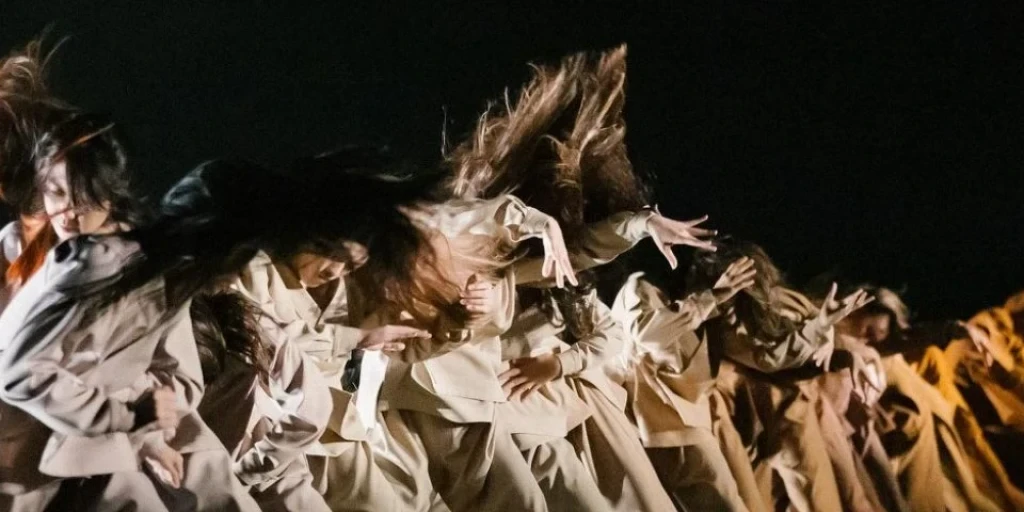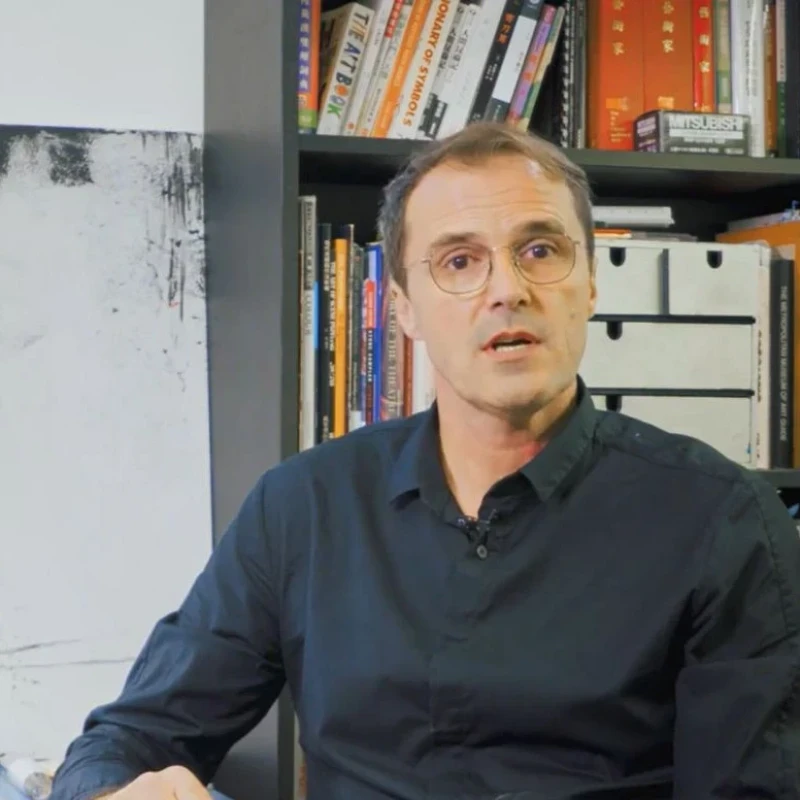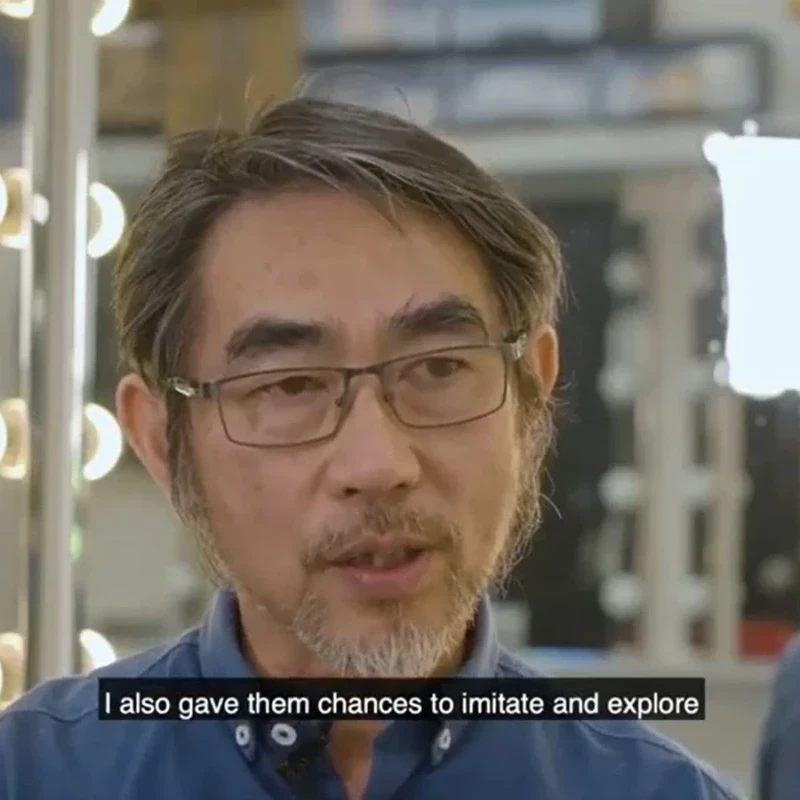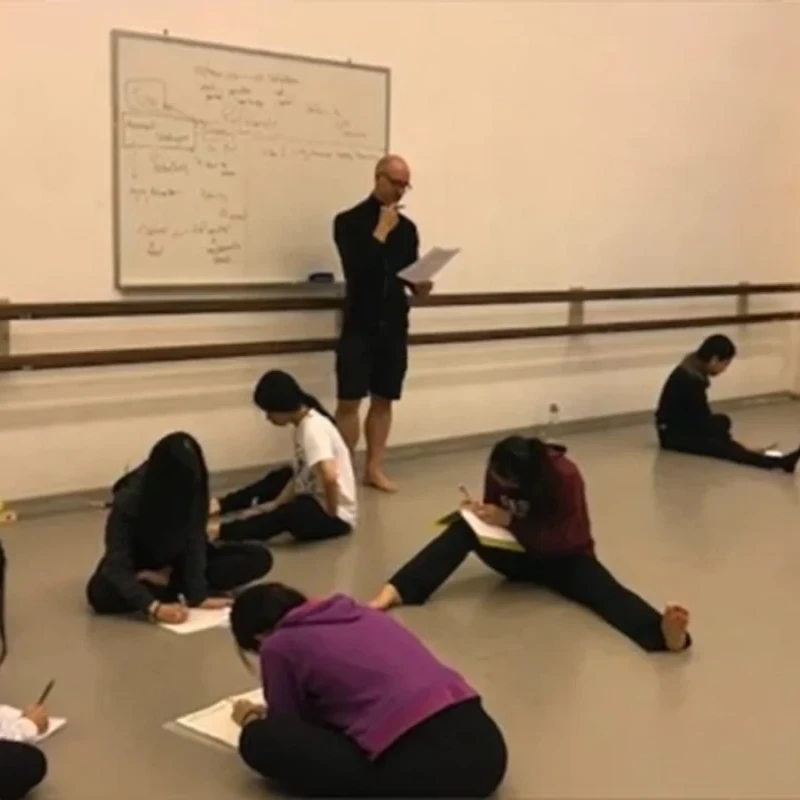Researcher: Dr Joyce Tang (School of Music)
Sonic-Visual Interplay, spearheaded by composer Joyce Tang and art critic/curator John Batten, aims at connecting the new music and visual art scenes in Hong Kong. The project unifies the commissioning of music with visual art, and includes educational and community outreach components with the aim of encouraging creative exchanges and dialogues between composers, sound artists, and visual artists.
Alongside Sonic-Visual Interplay is our outreach initiative, CoLab, designed specifically for fifteen emerging composers/visual artists. Participants of this programme experience behind-the-scenes tours of cultural sites and Hong Kong New Music Ensemble's interdisciplinary productions, as well as a chance to showcase their own work in a collaborative performance/installation.
>NME15 Projects
>Sonic-Visual Interplay Workshops
>Leaflet
Researchers: Stella Lau (School of Dance), Louise Lee (Education-Information Technology - EduIT), Jenny Yee (HKAPA Library) & Dr Xianliang Dong (School of Dance)
Abstract
Archiving is a process of organizing and creating content for sustainable, long-term access. However, the “archivists” actively shape the content in the realm of the performing arts, which often involves adding a new layer of knowledge to the original artform. This article explores the archiving of a ballet repertory course conducted in a higher education institution in Hong Kong during the pandemic, including the archival product and the collaborative process between a multidisciplinary team of people from dance, education, and library science. While teaching repertory online has its challenges, being “online” also offered unique learning experiences. Aiming to illustrate the topics related to hybrid pedagogy and individual creativity in use during the pandemic, the team conducted interviews with some participants for the purpose of creating a series of short educational films. These materials were collected and stored in the institution’s digital repository as the first archive for a specific course.
> Full Article
School of Dance Dance Project 2021 梁祝 x APA 學堂
> Link to video
> The Academy Library Archive
> Production Video
Researcher: Dr Terry Lam (School of Film and TV)
Abstract
Action-narrative is an approach to describing the transformation of human motion or action from a pure aesthetic movement to an expression of meaning in media. I investigate this concept from the transformation of my Hong Kong cinema practice from a visual narrative-based approach to what I have termed an 'action- narrative' approach. This transformation takes place within the traditional constraints of Hong Kong cinema including the production process, director-writer relationships, actor-marketing concerns, and Chinese censorship. Rather than constraints, these should be seen as generative parameters for the entire creation process.
My research takes Hong Kong action film practice as the background and investigates how a specific social-cultural environment creates this unique film genre. I explore how the interventions of a variety of stakeholders related to the movie production can drive the creation of the story in terms of their values and concerns. Deleuze's description of de-territorialization and re-territorialization informs my reflection on my work to reveal the relationships behind the transformation of my process. The insights from this study will contribute to the knowledge of traditional filmmaking, digital screen production and screenwriting practice in Hong Kong and reflect the interactive relationship between the practice and the socio-cultural transformation of Hong Kong.
Keywords: Visual storytelling, Action-narrative, Becoming, Hong Kong action movies, Deleuze, screen production
>Researchgate >Website
Researcher: Ata Wong (School of Drama)
Abstract
What kind of sparks may be produced in the cross-border dialogue of art particularly in physical theatre?
Eastern and Western theatre are distinct performing art forms that have developed in vastly diverse ways throughout human history. Western drama emerged extremely early, and with its magnificent artistic creations and scientific aesthetics, it quickly developed a full system, strict structure, deep ideas, and the brilliance of numerous Western dramas, becoming the most brilliant drama in human theatrical culture.
The Eastern started out quite early, but it was not until much later that it really began to take shape. The primary cause of the protracted brewing process, aside from the external variables of social economy and political structure, is the art’s complexity, excellence, and beauty. Eastern opera's idea of drama, which performs stories through song and dance, not only imaginatively comprehends the hypothetical nature of art but has also evolved into a complete, unified, harmonious, graceful, mature, and systematic assumption of dramatic art. It has unmatched creativity and originality in many areas of stagecraft and plays a unique role in the growth and development of international theatre.
Regarding the theatrical technique of what we learn from Western cultures, they are actually well-equipped and completed. Systematic research can be conducted, and many more resources are available for further development. On the other side of the world, saying that the east. There are many traditional techniques that specialise in different aspects of the theatre. For instance, Xiqu's technique, the movement for Cantonese Opera, Noh theatre, etc. All abilities are unique but independent. In-depth research could be a chance to further improve relations between all sides, to meet East and West, and to seek cooperation.
For this research, mask training would be the particular focus of the in-depth exploration of both cultures. Masks have been used almost universally to represent characters in theatrical performances. Theatrical performances are visual literature of a transient, momentary kind. It can be seen as a reality, it expands itself by its very revelation. The mask participates as a more enduring element since its form is physical.
Researchers: Professor Martin Lau, Professor Stephen Chow (School of Chinese Opera)
Cantonese Opera is the largest among traditional Chinese Opera genres in Guangdong and is sung and spoken in Cantonese. Theatrical contents are expressed through singing, speaking, acting, and martial arts. In 2009, it was inscribed onto the UNESCO Representative List of the Intangible Cultural Heritage of Humanity. Dr Lam Kar Sing, a Cantonese Opera grandmaster, formed his school of art; researching, practicing, performing, and transforming, drawing upon the best examples of different genres. He has had extensive influence on Cantonese Opera. This paper aims to discuss and analyse the vocal techniques in Dr Lam’s school of art based on oral data from Dr Lam and the song Yulihun (or Jade Pear’s Spirit).
Researcher: Alan Kwan Tsz Wai (School of Theatre and Entertainment Arts)
Abstract
As the Department of Media Design and Technology in the TEA School has acquired a selection of advanced motion capture systems, including the Xsens motion capture suit and the Faceware facial capture system, we initiated a project that brings together Alan Kwan, our faculty member and a digital artist/researcher, Ka Chi Chan, an experimental 3D artist and computer graphics expert, Chloe Wong, a dance choreographer, and Olivier Cong, an independent singer/songwriter, to create a virtual performance using these technologies.
Through this project, we want to encourage an experimental and DIY spirit of working with technologies within the academy, and to create aesthetic and technological experiments in dance, music, and performing arts that are driven by artists. From an artistic standpoint, we want to explore experimental visual aesthetics enabled by these technologies, instead of adopting the mainstream style of photorealism as seen in AAA videogames and Hollywood films. From a technical perspective, we also want to explore a software pipeline with these technologies that would allow such production to be achievable on an independent scale and within the academy. We believe that this would help to generate useful experiences and resources for our upcoming courses as well as school productions.
Researcher: Xiaoqiang Yan (School of Dance)
The research will focus on the digital visualization of Spiral, one of most important elements in Chinese Dance, and how to synchronize digital visual effect and dance movements as an immersive theatre experience.
Spiral(螺旋)is one of the fundamental principles of bodily moving in Chinese Dance, which exists in both signature postures(舞姿) and moving momentum (動勢), and the constant contrast in moving directions between upper and lower body produces the unique dynamics in Chinese Dance, physically, culturally and aesthetically.
The collaboration between dance and technology, especially with digital multi-media has developed rapidly for the past few years. In this research, we will try to explore the possibilities between the two disciplinaries, experimenting the interaction in both technological and artistic ways.
The research is comprised of 1) capturing the elements of Spiral by camera(s), from the perspectives of shape, breathing , momentum, rhythm, weight, space, time, flow, musicality and Qi, 2) visualizing the unique characteristic of Spiral through digital multi-media, 3) responding to the digital visualization from the dance bodies in the forms of solo, duet and ensemble, and 4) synchronizing the digital visualization and dance choreography simultaneously.
Eventually, the research will also explore the connections between dancers, digital visualization, and audience engagement in the immersive theatre context as well as the interactive impact between each party involved.
Researcher: Jonathan Goodwin (School of Theatre and Entertainment Arts)
Synopsis
Jon explains to us how he incorporates PaR into his teaching to rediscover a traditional technique through systematic questioning, experimentation, documentation, reflection and modification, which allows the students and himself to gain new knowledge about the technique. Despite the disruptions caused by the pandemic, Jon and his students remained committed to completing the project, and managed to create results that were very satisfying to the team. Please click on the image below to watch the video.
Researcher: Sunny Chan Ming-Long (School of Theatre and Entertainment Arts)
Synopsis
Chan Ming-Long Sunny, a highly distinguished theatre make-up artist in Hong Kong, and our well-respected Lecturer of Theatrical Make-up in HKAPA, has developed new understanding about his teaching approach through a PAR project for theatrical make-up courses. The Head of Performing Arts Research, Phoebe Chan, has conducted an interview with Sunny to let us learn more about his research process and findings. Let's find out how Sunny drew inspiration from his artistic expertise and his experience in working with students to expand his teaching repertoire.
Researchers: Brenton Surgeonor (School of Dance) and Dr Prudence Wales (Research and Interdisciplinary Studies)
Synopsis
This PaR project sought to explore ways to systematically develop first-year undergraduate dance students’ reflective practices to enhance their understandings of their own bodies. This project is the first in an iterative cycle, developed by the teacher-practitioner-researchers, to develop pedagogical processes that foster both cognitive and embodied forms of thinking.
The project was two-fold: the teacher-practitioner-researchers investigated ways the course teacher (Brenton Surgenor) fostered his students’ critical thinking skills with the support of digital technologies; and how the students inquired into the ways in which they moved. This was done by taking a critical approach to their bodily movements, patterns and behaviours, to become more articulate and knowledgeable thinker-movers.
The teacher-practitioner-researchers applied an action research model. This enabled Surgenor to investigate his pedagogical practices during the development and implementation of the reflective-based activities, and reflect upon and refine his plan for future iterations. He developed a series of learning activities to foster the students’ critical-bodily-thinking. These involved students utilising a range of traditional and digital platforms to perform, experience, observe, and reflect in and on their bodily practices. The second researcher (Prue Wales) observed classes, took fieldnotes, steered analytical reflections with Surgenor, and conducted interviews with him and the students.
Students were required to apply and document the different activities and techniques that were designed to develop their awareness of their bodily actions including: somatic exercises, sensory deprivation, photography and video recording, first and third person observations, analysis from multidimensional perspectives, discussions and vocabulary building activities. Student reflections occurred through discussions, writing, drawing, vlogging, blogging, and the creation of multimodal posters.
Students revealed that the activities not only helped them learn about their own bodily practices in the class, but also, in some cases, talked about how they had transferred the skills that they had learned to correct their technique in other dance contexts. Many of the students articulated how they learned to see themselves as active agents responsible for realising their physical and technical potential. The teacher-practitioner-researchers successfully identified: which digital technologies best supported this cohort of students’ ‘bodily’ and cognitive reflections; ways in which applications of digital technologies for reflective purposes could be improved upon in the classes; effective methods for students to develop more consistent critical bodily thinking practices. Additional, Surgenor identified formulaic structures in his own teaching practice and ways to resist and break these patterns to become a more effective and critically aware educator.




